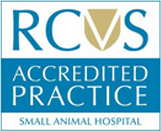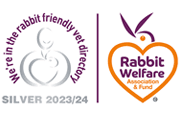The condition is most commonly caused in older animals by age-related wear and tear. It can occur in younger animals, although, in these cases an underlying cause is generally identified.
Such causes can be developmental such as hip dysplasia; elbow dysplasia; luxating patella (loose kneecaps) or; they can be due to trauma to the joint or the structures that support it such as fractures and ligament tears.
Pain is the typical sign associated with osteoarthritis. Pain may not be evident in the early stages of the disease. As the disease progresses, pain may be noted when the pet is moving or exercising. As the condition progresses further, pain becomes continuous but is worse when the pet is weight bearing and ultimately pain affects all activities including sleep.
A dull ache is associated with chronic pain related to osteoarthritis. Recent use and damage to the joint structures may exacerbate the problem in the short term and cause sharp shooting pain.
In most cases the disease is suspect based on physical examination. Confirmation of the disease, however, requires radiography. In addition, if an underlying cause is suspected that may benefit from surgical treatment, then radiographs to accurately diagnose the condition are vitally important.
The main aim of treatment is alleviation of pain. A multi-modal approach that is tailored to every individual patient is required to manage this complex issue.
Weight management is of paramount importance in the treatment of this condition. The more weight the joints have to bear, the more the discomfort and the quicker the progression of the disease. There is often a catch-22 problem with weight management. Excessive weight bearing exercise (land exercise like running) is discouraged for patients with osteoarthritis but less exercise makes maintaining or losing weight more difficult. Non-weight bearing exercises such as swimming are therefore recommended. This should be undertaken in a controlled manner at a certified veterinary hydrotherapy centre of which several are now available.
Provision of well-padded bedding for the pet to lie on will also help relieve some discomfort.
Although these factors will help, most pets will require some form of medical therapy to provide greater alleviation of their symptoms.
In mild cases of the disease or as an adjunctive treatment, neutraceuticals that contain substances such as glucosamine and chondroitin are used as they provide nutrients that can help in the repair and maintenance of joints. It should be borne in mind that neutraceuticals are not regulated and there is wide variation in the quality of the products that can be purchased. It is recommended that you seek our advice before purchasing a particular brand.
Non-steroidal anti-inflammatory drugs (NSAIDs) are the main stay of medical management for more advanced cases. Several large studies in human and veterinary medicine have demonstrated unequivocally strong evidence for the efficacy of NSAIDs in treating osteoarthritis. There are various types of these drugs available with similar efficacy and your veterinarian will select the product based on the individual patient and the risk of side effects. A common side effect of this drug is to upset the gastrointestinal tract. The drug should therefore be stopped in the face of any vomiting or diarrhoea and our advice be sought. These medications should never be administered on an empty stomach. Another concern with this drug is the risk of aggravating kidney disease. At the standard doses these drugs will not cause kidney damage, but they are contraindicated in the face of pre-existing kidney disease. This is the reason why it is recommended to perform tests to assess kidney function before and every 6 months during treatment.
There is less strong published evidenced for the other medications but, based on the available literature and clinical experience, they have an important role to play in the multi-modal management of osteoarthritis that is often required. These drugs include:
- Pentosan polysulphate (Cartrophen) has a mild anti-inflammatory effect but its main function is thought to be in maintaining joint health including preserving the joint cartilage.
- Tramadol is a drug that is not licensed in veterinary medicine, but its use is extrapolated from that in people and it has been found to provide significant pain relief in many veterinary patients.
- Paracetamol/codeine (Pardale-V) The use of this drug is again extrapolated from that in people. It must not be used in cats due to the high risk of toxicity of paracetamol in this species. The drug can be used safely in dogs but only at the prescribed doses as dogs are more susceptible to paracetamol toxicity than people. It is licensed for use in dogs for up to 5 consecutive days only.
Other drugs are available and may be used on a case by case basis.
We are now offering a novel treatment using the science of stem cells. Stem cells are found naturally in our bodies and they can self-renew and transform to any other structure such as muscles, tendons, cartilage, etc. If conventional therapies are not considered to be sufficient for your pet, then this could be a very good option.
The process of producing stem cells is as follows – first cells are harvested from the individual patient by collecting a sample of their own fat (by way of a simple surgery) and blood. Second, the stem cells from these samples are cultured by a specialist lab until they are assessed to be actively growing and healthy. Third, we then inject the cells in to all the joints that have been identified to have changes related to osteoarthritis! This treatment has been demonstrated to improve the quality of life from osteoarthritis related pain with the best effects being achieved 2-3 months after treatment. The effect of one treatment is reported to last from 6 months up to 2 years.
In some cases where the pain is very severe and/or cannot be managed with medical therapy, then surgical alternatives may be considered. For example, total hip replacement is now a commonly performed procedure at specialist veterinary centres.














